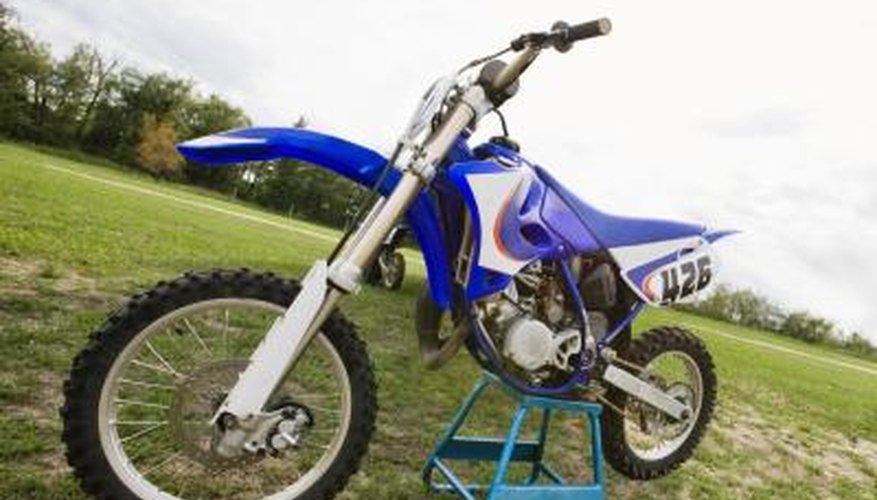Yamaha's WR-series dirt bikes utilise an adjustable rear shock absorber to provide the best performance while navigating the terrain found on the racetrack. While the shock absorber's ability to dampen its compression and rebound strokes must be tailored to its rider's demands, the shock absorber's preload -- the preset amount of compression placed on the shock's spring -- must be set according to the rider's weight to provide the greatest amount of stability and maneuverability. This adjustment is easy to make, but requires the help of an assistant.
Place your WR on an engine stand to lift the rear tire off the ground.
- Yamaha's WR-series dirt bikes utilise an adjustable rear shock absorber to provide the best performance while navigating the terrain found on the racetrack.
- Place your WR on an engine stand to lift the rear tire off the ground.
Measure the distance between the rear axle and the rear fender's mounting bolt with a tape measure. Write this measurement down on a note pad.
Remove your WR from the engine stand. Sit on your WR to place a load on the rear shock absorber. Have an assistant measure the distance from the rear axle and the rear fender's mounting bolt. Record the measurement on your note pad.
Subtract the loaded measurement from the unloaded measurement. Ideally, the rear shock absorber should have compressed between 3.5 and 3.9 inches while you were siting on the motorcycle. If the shock absorber's compression was greater than 3.9 inches or less than 3.5 inches, the shock absorber's preload needs to be adjusted.
Adjust the rear shock absorber's preload by turning the adjuster located above the spring. Loosen the adjuster's locknut with a hooked spanner wrench. Turn the adjuster clockwise with your hooked spanner wrench to increase the preload and raise the dirt bike's rear end. Turn the adjuster counterclockwise to decrease the preload and lower the rear end.
- Subtract the loaded measurement from the unloaded measurement.
- Turn the adjuster counterclockwise to decrease the preload and lower the rear end.
Measure the difference in rear end height, with both a loaded and unloaded shock absorber, as explained earlier. Adjust the preload as needed, then tighten the locknut against the adjuster with your hooked spanner wrench.
TIP
Compression and rebound settings must be adjusted according to the racetrack and riding conditions.
